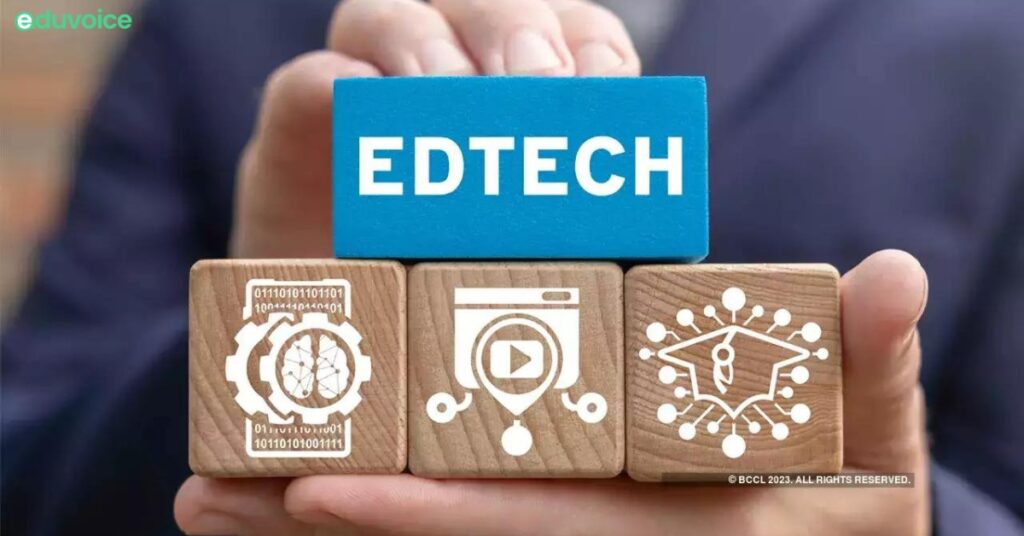Educational technology solutions for studying abroad were picking up speed long before Covid-19 became the new normal. With prolonged lockdowns and travel restrictions through most of 2020 and 2021, EdTech solutions stood out with their potential to minimize disruptions for prospective international students – and in fact, revolutionize studying abroad altogether.
The growing presence of EdTech start-ups and solutions providers in India was notable even before December 2019. Now, it seems that India is experiencing the ideal set of conditions where educational technology creates the perfect infrastructure for responsive and lasting study-abroad solutions nationwide. This is especially significant, considering there has been a precedent of imbalance between study abroad prospects in Tier I versus Tier II cities – a trend we are now seeing a shift towards greater equilibrium. A number of factors are at play, from the socio-economic development of India’s Tier II cities to the enhanced accessibility of resources and support educational technology platforms offer.
India is ripe for outbound student mobility. In fact, estimates frequently place the country as one of the largest sources of outbound students, second only to China. This growth isn’t only focused on Tier I cities, which traditionally saw the greatest levels of development, in terms of purchasing power, academic opportunities, etc. Tier II cities have seen rapid growth in recent years and with the omnipresence of the internet, students from these cities now learn about and access the same study abroad opportunities as students elsewhere in the country.
Student profiles across India showcase an overwhelming trend of ambitious and academically strong individuals with an earnest need to unlock great opportunities. India is, unsurprisingly, an attractive source market for global universities for these very reasons. This trend is not about to stop anytime soon, with experts predicting 1.8 million Indian students abroad by 2024. Increasing incomes in Tier II cities, the greater availability of education loans, and of course enhanced access to the right information are among a few of the factors making studying abroad not just a dream but a tangible reality for students across the country.
Over half of study abroad inquiries we receive at present, come from Tier II cities. Students from these areas are increasingly sitting for proficiency tests like the IELTS and TOEFL iBT, generally a key requirement to qualify for study abroad. Education fairs and seminars attract considerable attention from these locales while an increasing number of education loan applications are flowing in from Tier II and III cities like Guntur and Tirupathi.
While educational technology isn’t the only reason we’re seeing this growth in study-abroad intention, it certainly plays a significant role. Students in Tier II and III cities are no longer restricted by geographic limitations to the right information and resources, for example. Virtual offices became a necessity of the times during the pandemic when businesses could not operate physically. Nonetheless, they have been a blessing in disguise. Now, students can walk in for a counseling session at a physical branch, but also connect remotely with counsellors from anywhere in the country. This access has been invaluable in connecting students with the right people to guide them through the intricacies of studying abroad, without needing to commute to the nearest education consultancy in a neighboring city. Whether they are looking into program recommendations or application support, seeking study loan options, or looking for visa guidance, they can do so from anywhere in the country.
Enhanced connectivity isn’t just limited to counsellors. With real-time communication more accessible than ever before with just an internet-enabled device and a WiFi connection, students sitting at home can engage directly with universities and other international students. From the comfort of their home, they can tune in to education seminars in a different state or join a virtual education fair hosting university representatives from hundreds of global institutions. Digital tools haven’t just removed barriers – they’ve blown them wide open. Prospective international students across India, and indeed the world, are more empowered than ever before thanks to this digital revolution.
Multi-channel connectivity, as groundbreaking as it is in reshaping global higher education, is the tip of the educational technology iceberg. Information access used to be limited to physical spaces, often as a paid service. Now, students can hop on to an EdTech platform on their smartphone, check off their preferences from study abroad destinations to preferred subjects and budget ranges, and receive a custom shortlist of options in a matter of seconds. And this is one of the more basic examples of what AI-driven systems can do.
A student who completes their profile evaluation not only receives a personalized data-driven list of programs matching their academic profile and preferences. They also receive the opportunity to engage with matched universities directly. Universities in turn receive real-time updates of their most engaged, best-fit prospects. A single intuitive interface lets them access, track and understand the engagement behaviors of audiences previously limited to traditional marketing and onsite reach. These universities can in turn recommend personalized programs for individual students, through direct profile access that lets them verify whether the candidate is a good match for their institution. Real-time chat and video calls allow one-to-one connections between universities and these verified prospects. The two-way connectivity extends to counsellors onshore and international student mentors off-shore, putting students in the uniquely empowered position of possessing all the right tools and connecting with all the right people to pinpoint their ideal study abroad solution.
This level of connectivity is, simply put, unprecedented. The internet is akin to a thousand Libraries of Alexandria behind a screen – but to give these quintillion bytes of data meaning, the right tools are necessary. Educational technology provides these tools to students – funneling massive amounts of data that is impossible to sift through in a single lifetime into a bite-size report of relevant information, streamlining the process into a step-by-step journey you can complete through a single device. The filtered data is not only easier to manage but is finetuned for each individual user, making their ideal opportunities accessible in just a few clicks. Coordinating with counsellors and universities, students can complete applications, sit English proficiency tests, and submit visa applications from a desk at home.
This is an exciting time for educational technology – the full potential of digital tools is being realised in tandem with the emergence of a market maturing for its use. For international student prospects across India, EdTech is making the world their oyster.
For More Such Articles, News Update, Events, and Many More Click Here






